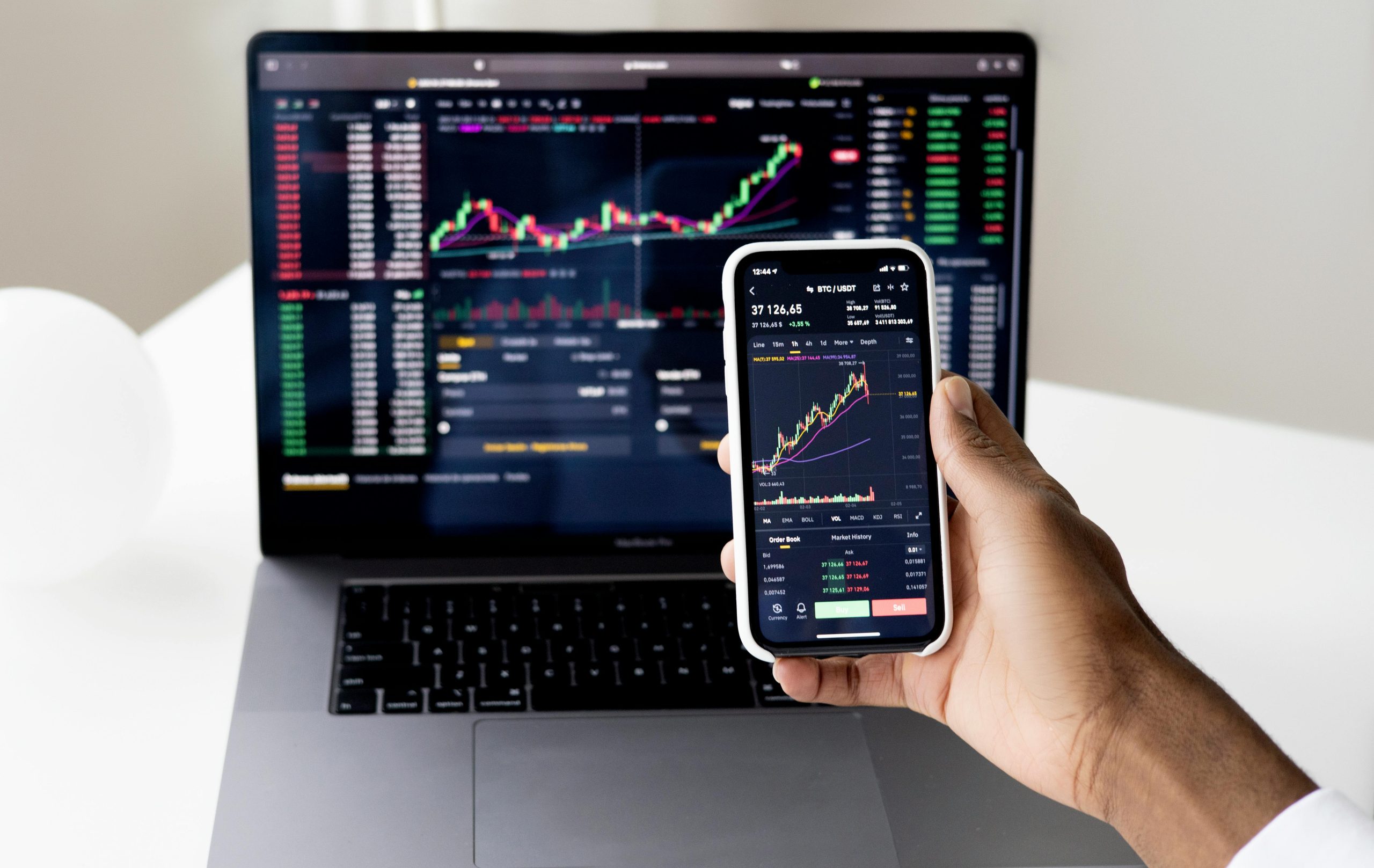Pre-Merger Operations (1990s - 2017): Early History

Genesis and Early Growth (1990s) of Aberdeen Asset Management.
Aberdeen Asset Management (AAM) actually got going in the 90s and became recognized as a major player especially in the developing markets and Asia. This concentration enabled the company to access some of the most rapidly growing regions in the world which led to a swift increase in its Assets under Management (AUM) and consequently share price. The investment house received a reputation for the house view of long-term fundamental on-the-ground research, which started providing excellent performance. This was the key time in developing the core value of the company and its stock got the attention of investors seeking exposure to international growth, which formed a strong foundation on the future valuation of the company.

Impact of Asian Financial Crisis (1997-98) on the Exposure of Aberdeen.
The high concentration in the Asian and emerging markets that AAM had was a two sided sword to the point when the Asian Financial Crisis struck in 1997. When the currencies went down and the regional economies grounded, the money of AAM was seriously depleted. The direct and dramatic impact of this exposure was experienced by the share price, as shareholders went running and the reputation of the company suffered a big blow. This incident is already a classical example of how the fundamental investment strategy of a firm could turn out to be its strongest asset and at the same time the biggest liability to the company, and illustrates the volatility and the risk which global events will place on the stock valuation of a fund manager.

The Transition: Mutual to PLC of Standard Life (2006).
When the giant Standard Life arranged to demutualise (transform itself into a publicly traded company), in 2006, the British insurance and pensions market has experienced one of the most dramatic corporate changes in the UK history. This was an enormous project and millions of new shareholders were made overnight and the company was listed on the stock exchange. It was necessitated by the need to obtain capital to help it grow and develop its products in the future and it became a PLC. It was a turning point and its priorities shifted to shareholder value and subjected its fortunes to the vicissitudes of the day-to-day trading of the public markets.

First day Stock Performance and Signorina Sentiment.
Global Financial Crisis: Peak-Trough Analysis of the two entities in 2008.
Recovery and Emerging Market Focus Share Price Rally of Aberdeen (2009-2013).
Strategic Change at Standard Life: Change of Direction to Fee-Based Income.
Investment Performance Challenge: Asset Outflows Before the Merger.
Unique Value 1
Although both Standard Life (SL) and Aberdeen Asset Management (AAM) had established their market position, both companies had net asset outflows that were incessant in the years before their merger.
Unique Value 2
This was basically an indication that the clients were withdrawing more cash than they were depositing in their coffers. As a fund manager, AUM is his or her blood, since the management fees directly depend on it.
Unique Value 3
As AUM declines, the revenue will follow and this will subject the share price to a pressure that is downward. This poor performance and subsequent redemptions by the investors became critical, and a radical corporate measure such as a merger appeared to be a solution in obtaining the magnitude and cost savings that would stabilize the investor mood.

The Political Factor: Scottish Independence Referendum (2014) and Market Reaction.
The 2014 Scottish Independence Referendum left both Edinburgh-based firms with a huge hedged political risk. The threat of Scotland becoming independent of the UK cast some serious doubts concerning currency, regulation and environment in which the big financial institutions operate. Uncertainty due to fear of corporate relocation or the complex transitions are usually experienced and the uncertainty is usually the lower share price multiple as investors price the risk in. The risk remains despite the fact that the ‘No’ vote has ultimately won, but the fact that the firms had defined a need to have a stable regulatory environment, which merger has eventually taken care of, contributes to the argument that creating a larger, more geographically diversified company is necessary.
Multiples of Valuations of Aberdeen and Standard Life Just before the Merger.
There was a difference in market perception of the value of each company before the deal. The larger insurance and pensions base of Standard Life was not as frequently valued. Aberdeen had outflows, but was considered a pure play asset manager that had a global brand. In the case of the deal, a breakdown of their Price-to-Earnings (P/E) and Price-to-Book (P/B) ratios revealed that the merger was seeking to achieve value creation through the integration of the stable platform revenue of SL and global investment capability of AAM. The point of the announcement was to close the difference between their independent value and the perceived value of a super-group that could be synergistic.
II. The merger of Standard life and Aberdeen (2017 – 2021).
Merger of equals AnnouncementShare Price Response and Synergy Expectation.
The merger, which was announced in March 2017, was a so-called merger of equals it combined two Scottish financial powerhouses to form the largest asset manager in the United Kingdom. At first, the response of the market was not entirely positive. Although costs synergies (savings through merging back offices and job cuts) were substantial, and tend to support the share price, the investors were also worried about the huge performance to integrate two complex, and even culturally different companies. The excitement of the market at the possibilities of the scale was dampened by the immediate difficulties of the execution risk and the continuing difficulty of the firms with the client outflows which led to an initial but usually unstable bump.
The New Entity: Day One Trading Price and Market Capitalisation.
The newly combined company became the instant giant in the financial arena of the UK when Standard Life Aberdeen took on its actual trading in August 2017. Its market capitalization immediately made it on the list of the top companies in the London Stock Exchange. The Day One trading price was an exchange ratio of the merger and the ultimate valuation of the two predecessor companies. Though the aggregate market cap was impressive on paper it was now time to test it out in practice, and this was now expected to remain and increase with time, and this proved to be a serious challenge as the business took years to overcome the challenges of cultural integration and aggression within the business environment.
Incorporation Problems and Volatility Share Price Disruption.
The mere inability to combine two giant financial services firms was an insatiable source of share pressure. Internal disruption was caused by integrating the IT systems, consolidation of investment teams, and alignment of corporate cultures. This only led to the further worsening of the performance in investments and the speeding up of the process of leaving the clients. This perception created by the market was that of an organization that was too busy with its internal politics and a spell of intense share price volatility and a general downward trend was experienced by an organization that was taking too long to realize the promised synergies and the outflows took place.
Continued Net Outflows: A Headache to the Combined Share Price (2017-2020).
The continuation of large scale net outflows was the major measure that was penalizing the share price of the merged company. The clients, especially the institutional investors were not convinced that the merger would be able to solve the inherent problem of poor fund performance immediately. Moreover, the upheaval associated with the very merger tended to arouse the clause in the contract permitting the institutional customers to draw funds out. A hemorrhaging in AUM was the headline story over a number of years, which literally cut the fee base directly and could not allow the stock to gain a sustainable rally, no matter how successful the cost cutting was.
Standard Life, Insurance Business divestment and Capital Return.
The further sale of the old insurance business to Phoenix Group was a major strategic move. This step was central to the previously developed turnaround of the capital intensive low multiple insurance business. It liberated large sums of capital, which was passed back to shareholders. This emphasis on the higher multiple asset and wealth management business was generally welcomed by the market. The special dividend or capital return was a positive influence in the share price indicating that the management was determined to unlock the shareholder value and build a purer and more focused financial services company.
Phoenix Group Receives the Sale of the Brand Name Standard life.
Selling the legendary brand name, Standard Life, to Phoenix Group was a milestone, both in the figurative and monetary sense. It verified that the company is well out of its insurance history. Although financially reasonable such as selling an attractive brand at a price that would enable the stock support, it left the group with the task of creating a new and coherent brand image. This marked a precurrence of the ultimate change in the new corporate identity and was an inevitable, but possibly emotionally painful, move in the change process of the company, with cash proceeds of the sale mostly driving the share price.
Share Price Effect of Strategic Reorganisation and Cost-Cutting Measures.
During this time, the management reiterated several times how much they believed in the efficiency of operations and achieving high levels of cost reduction. Each quarterly report contained information about job cuts and office mergers and IT simplification. These initiatives gave the share price a floor which showed that at least the cost side of the profit equation was being aggressively addressed. Nevertheless, the market itself was revenue-oriented (i.e. the recurrent outflows of AUM) and therefore reducing the cost was not enough to sustain a significant and substantial share price revival.
Crisis Crash and Recovery (2020) COVID-19 Pandemic Crash and Subsequent Recovery.
Similar to the GFC, when the COVID-19 pandemic abruptly started in early 2020, the Abrdn share price fell dramatically and abruptly as the world equity market faced a sudden loss of traders. As a natural outcome, asset managers are susceptible to decreases in market values as the AUM is decreased whether clients flow in or out. The latter was, however, followed by an unprecedented global stimulus measures and the following fast market recovery, that helped to restore the corresponding share price. This occurrence reaffirmed the high correlation of the stock with the general market trend in the entire world and proved its inability to withstand macro shocks but its capability to join general market surges.
Changing Leadership and CEO: Market Reaction to New Direction.
The challenges and impatience of the investors were manifested in a number of changes in leadership in the post merger period. The transition at Chief Executive Officer level and in the board meant a new determination to move the turn around. New leadership is usually met by a temporary spurt of hope in the market especially when the incoming CEO is perceived to be a ruthless change agent. These hires were mostly viewed as the effort to resolve the stalemate of the integration problems and sluggish strategic advancement, but only prolonged additions to share price occurred after the actual enhancement of outflows was achieved.
Addressing Underperformance: Stock Investment and Share Price Correlation.
Conclusively, the share price of an asset manager is a property of its capacity to generate money to its customers. The underperformance of its major investment strategies, especially in equity funds, was the only largest contributor of the outflows and the subsequent poor performance on the stocks. The attempts of the management to diversify their investment powers, employ great fund management staff, and re-engineer failing products were closely monitored. Investors rejoiced at any good news on the list of fund performance or being awarded new institutional mandates as indications that the basic business and hence share price might be just starting to turn the corner.
III. The Rebranding, Strategy, and Recent Performance (2021 – Present)
The Disastrous Rebrand to ‘Abrdn’: Press and Investor Reaction.
The company changed its name to the vowel-free, abrdn in 2021 (pronounced Aberdeen). This was supposed to form one and united global brand and indicate a complete break with the intricate history of its merged parent companies. The reaction of the market however was largely bewilderment and ridicule during the first media outbursts. The perceived cost and oddity of the branding would shadow the strategic rationale behind it and drag on feeling in the short term. Although rebrand has no direct impact on financials, management is making a judgment, which is highly considered in the market.
Short-term Share Price Response after the Rebrand.
Share price reaction was rather tame in the immediate aftermath of the change of name, and the change was not the dramatic, positive catalyst the management would have desired. Brand rebranding was taking place at a time when the broader market was mainly concerned with the material news of the company: AUM and flows. Investors basically considered the rebrand a need and yet secondary measure. It was the beginning of the last drive to streamline the corporate organism, yet the price of the shares was still controlled by the more substantial parameters of the financial performance, as opposed to the marketing style.
Interactive investor acquisition (ii): Wealth Management Pivot.
In 2021, the key strategic move was the purchase of interactive investor (ii) which is the second-largest direct-to-consumer (D2C) investment platform in the UK. This was a decisive move in a move to cement the wealth division of Adviser and Personal. The rationale was to have a high-growth technology-based, fee-stable source of revenue that was not as volatile to investment performance. It immediately propelled Abrdn to a significant wealth player and the company was put in a better position to be valued more attractively as a diversified financial services group.
Funding the ii Acquisition: Capital Structure Implication on the Share Price.
The cost of purchase of the ii acquisition was high. The financing system a mix of existing capital and possible new debt or equity played a key role in the evaluation of the market. Investors were keen on the effect of the deal on the regulatory capital status of the company and its capacity to remain able to pay high dividend. The management was able to make a case that the strategic value and the stable and repeat revenue of the platform, was worth the price and the share price outlook over the long-term is generally positive, as those who saw the value in the diversification.
Adviser Segment (including ii) vs. adviser performance vs. Investments.
After the ii acquisition, financial reporting of the company started showing the increasing separation of its core segments. The Adviser and Personal divisions (existing subsequently as the ii) tended to record strong net flows and stable revenue growth and served as a key stabilizer of the earnings of the group. On the other hand, the traditional asset management business, which is known as the Investments arm, remained to be in trouble with outflows. The stock price had started to embody a sum-of-the-parts valuation, with the better wealth platform subsidising certain chronic weakness in the core asset management unit.
The sector effect of Quantitative Easing Reversal and Rising Interest Rates.
The worldwide transition of the environment of Quantitative Easing (QE) and low-interest rates to the tightening monetary policy affected Abrdn in a complicated manner. On the one hand, higher rates made it more volatile as a factor that may scare away investment. On the contrary, it enhanced the returns payable on cash and money market investments that Abrdn handles. More importantly to the wealth platform, the increased rates of interest allowed the company to receive additional interest on client cash balances, which increased its profitability significantly and created a positive, but misunderstood, fillip to the share price.
The FTSE 100/250 Index Passive Fund Flows and Abrdn Position.
The decrease in the market capitalization of Abrdn over years saw the company be demoted by FTSE 100 to the FTSE 250 index. It is a material event to the share price of any big business since passive funds (such as trackers and ETFs) tracking the FTSE 100 are compelled to sell the stock, generating automatic negative pressure. The further trading in the FTSE 250 can be characterized by the small cap oriented investors. The index position of it, however, is a technical, though relevant, short-term demand determinant and investor base composition determinant.
The Current Asset Under Management (AUM) and Flow Trends.
At the current stage, quarterly reports on AUM and net flows will be the only most significant short-term share price change. The market has now no longer integrated the flows: good flows in the Adviser/Personal segments will be anticipated and reassuring, and a decline in outflows or better still a reversion to net inflows in the large Investments division will be rejoiced at. A positive or negative surprise, a boom or a wave of outflows, or a hint of stability leads to direct and acute share prices, as the valuation of the assets of the asset management business is like a test that is highly metricanimous.
Share Buyback Programmes and Short-term price support.
To indicate the confidence of the undervaluation of the stock and to use excess capital (which has been raised in most occasions by past divestitures), Abrdn has announced and implemented share buyback programmes at various intervals. Buybacks lower the shares outstanding, which is expected to boost earnings per share (EPS), and give a technical boost to the share price since it forms a large and regular buyer (the company itself). Although buybacks provide a short-term boost in prices and are an indication of sound capital management, it is not an alternative to organic growth, which is sought after by the market to ensure a long-term rising trend.
Consensus and Price Targets of Abrdn Stock by analysts.
The unanimous view of the professional financial analysts i.e. the consensus of the analysts is a major determinant of institutional investment. A shift in the consensus of the Hold to the Buy or a sharp rise in the price target can cause new buying, especially on the large funds. The stock of Abrdn has undergone re-ratings on numerous occasions following the strategic changes. The discussion usually revolves around the concept of whether the impaired asset management unit (lower multiple) or the expanding wealth unit (higher multiple) should be the one on which valuation is determined.
The Changing Regulatory Environment and its Cost/Price Effect in the Long Term.
The financial services industry has endured an insurmountable tidal of new regulation in the last 3 decades; between MiFID in Europe and global capital requirements. It is expensive to adhere to these rules, which raises the fixed overheads of the business. In the case of Abrdn, the long-term share price effect is established by how it is able to absorb such expenses by scale and efficiency and its capacity not to lose profitability. Any new major regulation, especially in the area of pricing transparency or capital requirements is another major risk factor which will devalue the stock in the long-term.